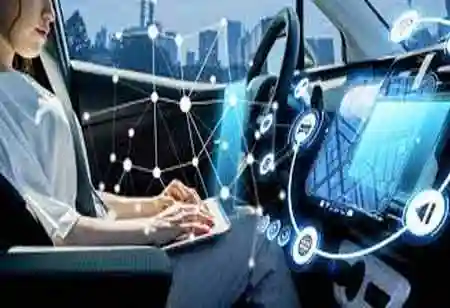THANK YOU FOR SUBSCRIBING
THANK YOU FOR SUBSCRIBING
Be first to read the latest tech news, Industry Leader's Insights, and CIO interviews of medium and large enterprises exclusively from Auto Tech Outlook

By
Auto Tech Outlook | Tuesday, August 03, 2021
Stay ahead of the industry with exclusive feature stories on the top companies, expert insights and the latest news delivered straight to your inbox. Subscribe today.
The car industry trends have paved the way for the automotive industry market trends to remain at the forefront of the competition.
FREMONT, CA: Automobile manufacturers, auto parts manufacturers, OEM original part manufacturers, transportation companies, car rental companies, and shared mobility companies all have a tremendous amount of opportunity to leverage the automotive industry's digital technology trends to improve automobile utility and customer satisfaction.
Trends and Technologies in the Automotive Industry
Artificial Intelligence
AI technologies such as deep learning, machine learning, and computer vision are used to uncover robotic automation applications within the automotive industry's future trends. AI leads self-driving or autonomous vehicles, assists drivers with safety, maintains the fleet and improves vehicle insurance and inspection services. Additionally, artificial intelligence finds uses in automotive manufacturing, increasing the pace of production, accelerating the process, and assisting in cost reduction. Chatbots are another excellent illustration of how AI Development Solutions For Businesses and Enterprises can benefit the automobile sector. They can help a bidder in reducing the staff and effort required to fulfill and serve customers. Connectivity facilitated by AI enables easy tracking of vehicle data for various use cases, including driver safety, fleet management, insurance, and predictive maintenance. Sharing or segmenting vehicle data benefits the client while also repairing and constructing the complete mobility ecosystem.
Self-driving vehicles
These are autonomous cars. They are focused on the simple goal of reducing the requirements for a human driver and look forward to ushering in a new era of daily transportation. Stockpiling AVs expands the scope of last-mile deliveries, reduces total downtime, and attempts to transform the notion of transportation into safe and secure by eliminating accidents caused by negligent human drivers. AVs are equipped with innovative and cutting-edge technologies, including AI-enhanced computer vision for detecting roadblocks or obstructions along the way.
Data Analytics and Big Data
Advanced data analytics notifies various decisions during a vehicle's life cycle throughout the development of extensive data. The data acquired from the cars helps to qualify predictive maintenance, alerts authorities in an emergency or an accident, and keeps fleet managers informed about their fleets. Automobile manufacturers can use predictive analysis to make decisions about their annual sales purchase and production target. Additionally, consumer automobile data enables the app to optimize supply chains, increasing sales and product design for incoming new vehicles.
Blockchain
Blockchains have several applications in the automotive industry. Several include sharing the vehicle's data with a secure network to enable connection and shared mobility solutions such as urban transit, ride-hailing, and delivery. Additionally, blockchain is used to verify the supply chain of spare parts, ensuring that the raw materials or components originate from reliable, safe, and legal sources.
Internet of Things (IoT)
The Internet of Things enables secure interactions between vehicles and their infrastructural components in the enormous automobile industry. This technology contributes significantly to increasing road safety, decreasing pollution, resolving traffic congestion, and conserving energy through better fleet management. Emerging corporations and startups have created improved sensing systems for the collection of vehicle data. Additionally, it enables the car to recognize and analyze its environment. The data obtained via IoT can be manipulated to provide drivers with excellent value-added services via in-car apps. Real-time driving data can provide navigation apps that alert users to potential traffic hazards or poor road conditions.
 Copyright © 2025 AutoTech Outlook. All Rights Reserved | Privacy Policy | Subscribe | Sitemap | About us | Feedback Policy | Editorial Policy
Copyright © 2025 AutoTech Outlook. All Rights Reserved | Privacy Policy | Subscribe | Sitemap | About us | Feedback Policy | Editorial Policy 



